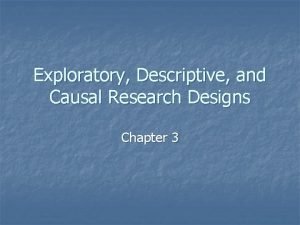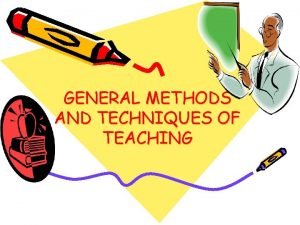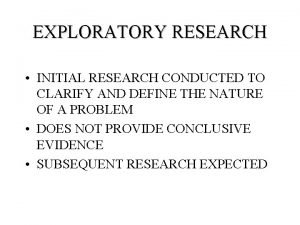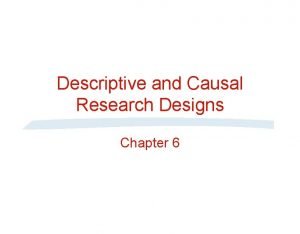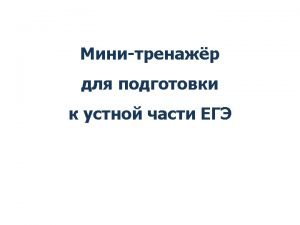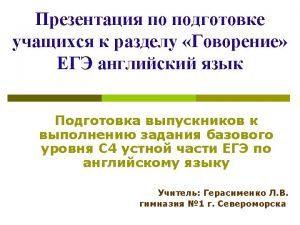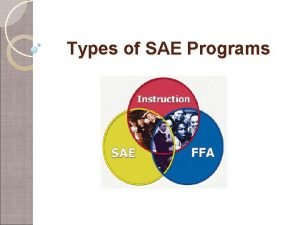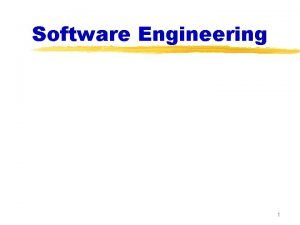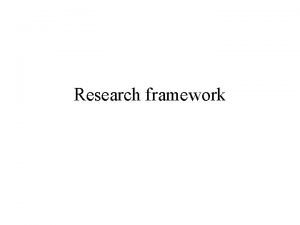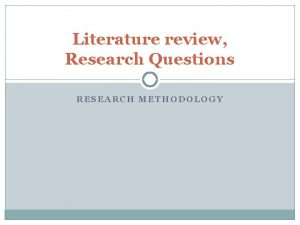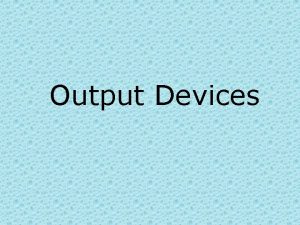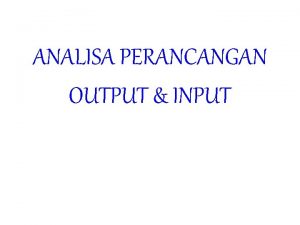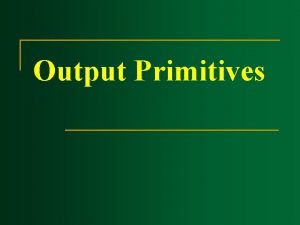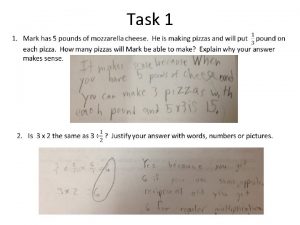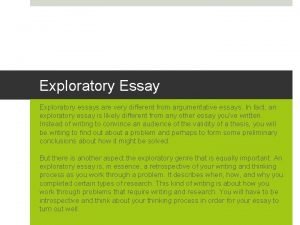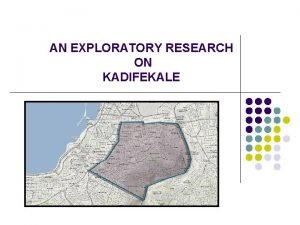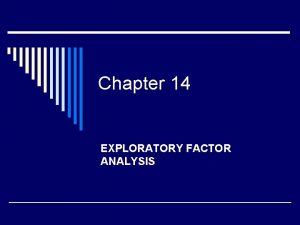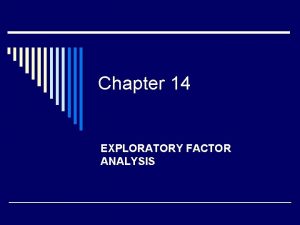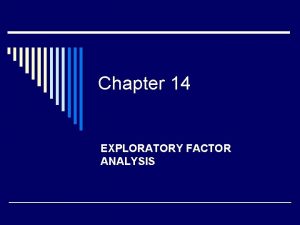Task Complexity and Output Complexity An Exploratory Study






















- Slides: 22

Task Complexity and Output Complexity: An Exploratory Study K. PHILIP CHOONG AND ZHAOHONG HAN TEACHERS COLLEGE, COLUMBIA UNIVERSITY KPC 2001@COLUMBIA. EDU HAN@TC. COLUMBIA. EDU

Motivation Cognition Hypothesis Question: What is the relationship between task complexity and output complexity? Is there a relationship between task complexity and output complexity? If so, what is the nature of the relationship?

Operationalization of Task Complexity Dimensions Reasoningdemands Contextual support Reasoning Single/Dual Task

Task: Story narration (C 1) + picture/+sequence -Complex +/-picture (C 2) - picture/+sequence Task conditions (C 3) + picture/-sequence +/-sequence (C 4) -picture/-sequence +Complex

Design Repeated measures Experimental Group Comparison Group 1 Comparison Group 2

Participants Experimental group: 10 native Japanese speakers from advanced ESL classes in New York City Average – 38 Gender- 9 females and 1 male Comparison Group 1: 5 native speakers of American English Average age: 33 All females Comparison Group 2: 10 native speakers of American English

Procedure Task: Story narration under 4 different conditions 4 stories vis-à-vis 4 conditions Instructions I am going to show you a set of pictures that tell a story. Please take as long as you like to look over the pictures, then tell me the story as if I cannot see the pictures. We will do this twice. The first set will be practice, just to make sure you understand the instructions. There is only one “correct” story for these pictures.

Example

Measures of Output Complexity Syntactic complexity # of T-units per narration Content complexity # of idea units per narration

Analysis and Results – Experimental group Friedman Test and Kendall’s W Test of Mean rank Both produced same results, significant at. 05 level Friedman Test of Mean Rank (Kendall’s test similar) Condition C 1_T-unit C 2_T-unit C 3_T-unit C 4_T-unit C 1_I-unit C 2_I-unit C 3_I-unit C 4_I-unit Mean Rank 2. 45 2. 00 5. 15 3. 90 4. 55 4. 25 7. 55 6. 15

Results- Form Complexity Condition 3 (+reasoning demands, +contextual support) most complex Condition 2 (Reasoning demands, -contextual support) Least complex, least variation Condition 4 (+Reasoning demands, -contextual support) shows most variation

Results. Content complexity Greater variation in content complexity than in form complexity In line with Friedman’s and Kendall’s W tests of mean rank. Also supported by paired sample t-test

Results – paired samples t-test Significant differences between conditions 1 and 3, 2 and 3, and 2 and 4 Both for Form complexity (t-units) and for content complexity (idea units) Contrast C 1_T - C 3_T C 2_T - C 4_T C 1_I - C 3_I C 2_I - C 4_I t-value df Sig. (2 -tailed) -3. 160 9 . 012 -4. 371 9 . 002 -2. 785 9 . 021 -2. 918 9 . 017 -6. 050 9 . 000 -2. 293 9 . 048

Results – individual Greater number of idea units may suggest that participant was more focused on content than form.

Results-Comparison Group 1 Native speaker results are parallel to non-native speaker results in terms of: Syntactic/Content Complexity: C 3>C 4>C 1>C 2

Results – Comparison Group 2 Rankings of difficulty of picture sets C 3>C 4>C 1>C 2

Discussion Finding 1: More complex conditions produce more complex output. C 3 +contextual support +reasoning demands C 4 -contextual support +reasoning demands Reasoning demands

Discussion Finding 2: Gap between the “contrived complexity order” and the “observed order of output complexity” Task Internal complexity +/-picture +/-sequence Contrived complexity: C 4>C 3>C 2>C 1 Observed complexity of linguistic output: C 3>C 4>C 1>C 2 Task intrinsic complexity: C 3>C 4>C 1>C 2

Discussion Finding 3: Patterns of variation differ for the experimental group vs. comparison group 1. Experimental group: Syntactic complexity: Content complexity: C 2 C 1 C 4 C 2 Comparison group 1: Syntactic complexity: Content complexity: C 4 C 1 Content complexity and form complexity are unequal.

Limitations and Next Steps Further data analysis Fluency as well as accuracy Lexical complexity Syntactic complexity in terms of S-nodes per T-unit

Conclusion The jury is still out. Task complexity is a complex notion requiring finer- grained analysis than has generally been given. More conceptual work is needed. In examining the relationship between task complexity and output complexity, there is a need to differentiate between content complexity and form complexity, and more importantly, to investigate how attention is allocated to form and content during task performance. There is a need to track down the differential impact of taskintrinsic complexity and contrived complexity More attention should be given to task-intrinsic complexity

Conclusion Grading Complexity and difficulty Complexity dimensions Granular analysis of complexity (e. g. , conceptualizer, formulator, and articulator) Effect size Perceptions of complexity
 Time and space complexity
Time and space complexity Tiered task bias task
Tiered task bias task Exploratory descriptive design
Exploratory descriptive design Exploratory descriptive causal
Exploratory descriptive causal Expository and exploratory approach
Expository and exploratory approach Brand audit worksheet
Brand audit worksheet Laboratory method of teaching
Laboratory method of teaching What is research design
What is research design In depth interview in qualitative research
In depth interview in qualitative research Exploratory research design
Exploratory research design Projective techniques in psychology
Projective techniques in psychology Descriptive and causal inference
Descriptive and causal inference Difference between exploratory and conclusive research
Difference between exploratory and conclusive research Study the advertisement
Study the advertisement Types of advertisement
Types of advertisement What is method study
What is method study Time study meaning
Time study meaning Time and motion study example ppt
Time and motion study example ppt Interest approach examples
Interest approach examples Exploratory style vs modern software development
Exploratory style vs modern software development Research design is a blueprint outline and a plan
Research design is a blueprint outline and a plan Objectives of literature review
Objectives of literature review Exploratory factor analysis
Exploratory factor analysis



